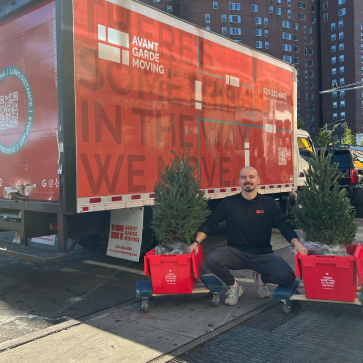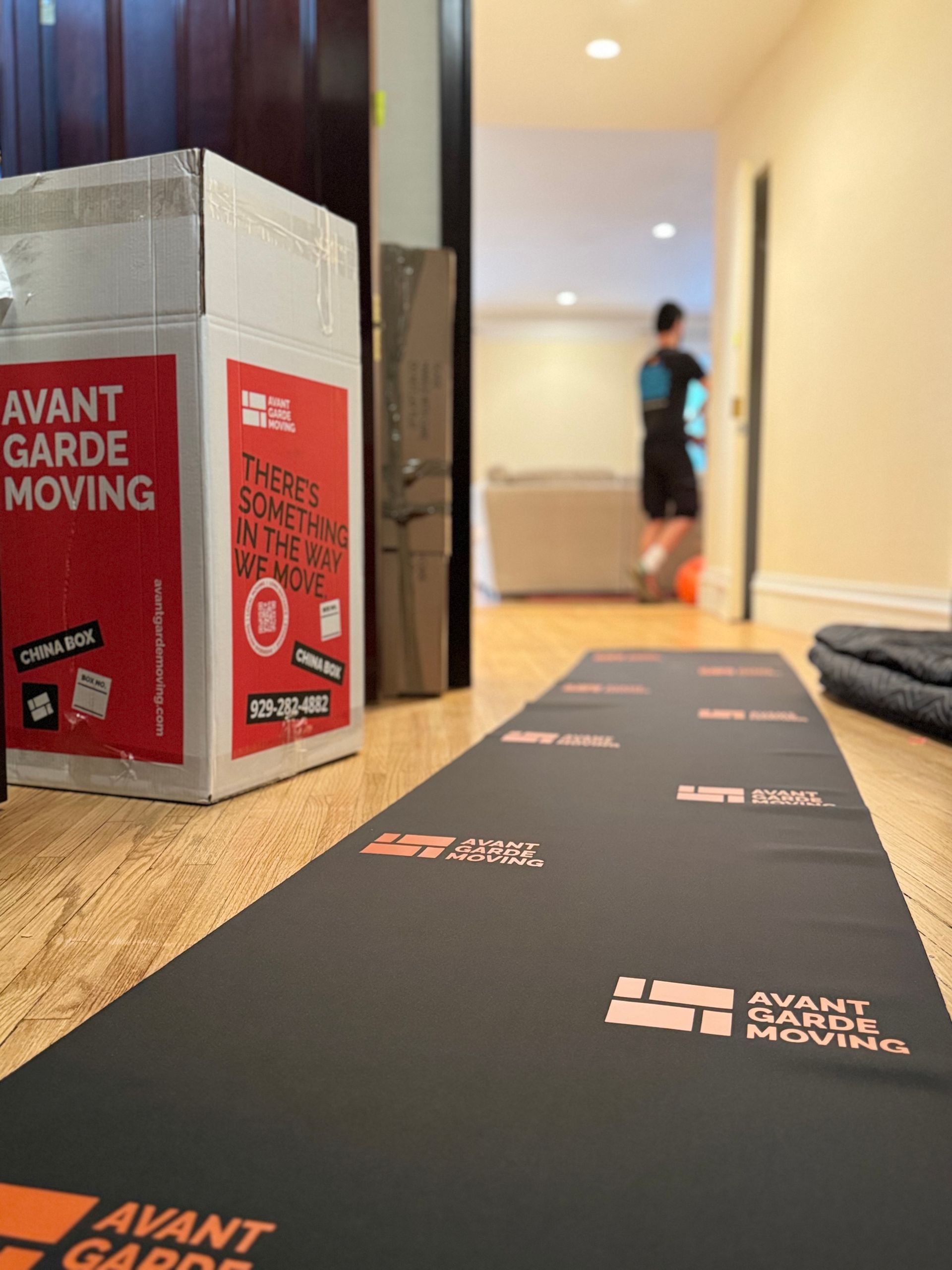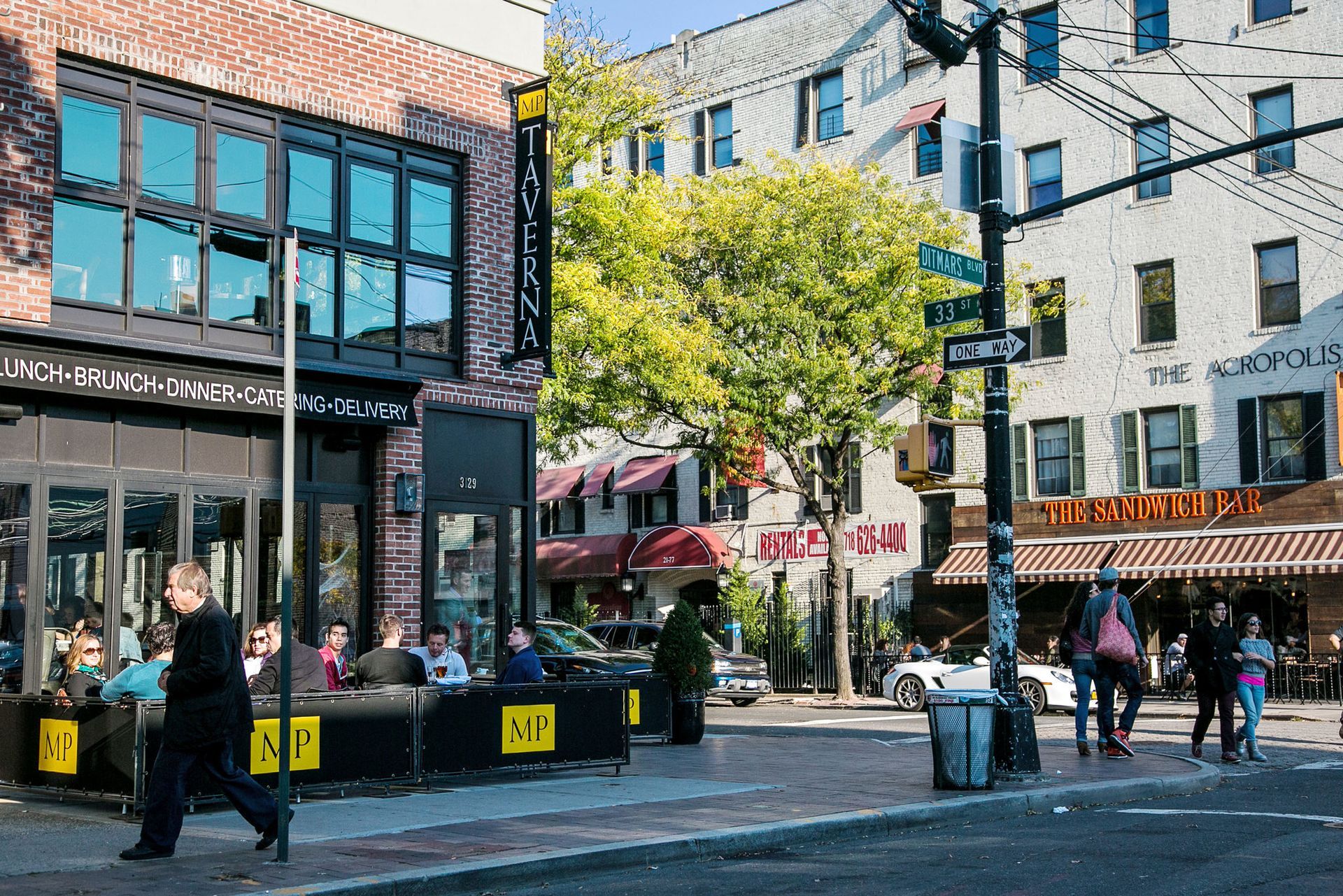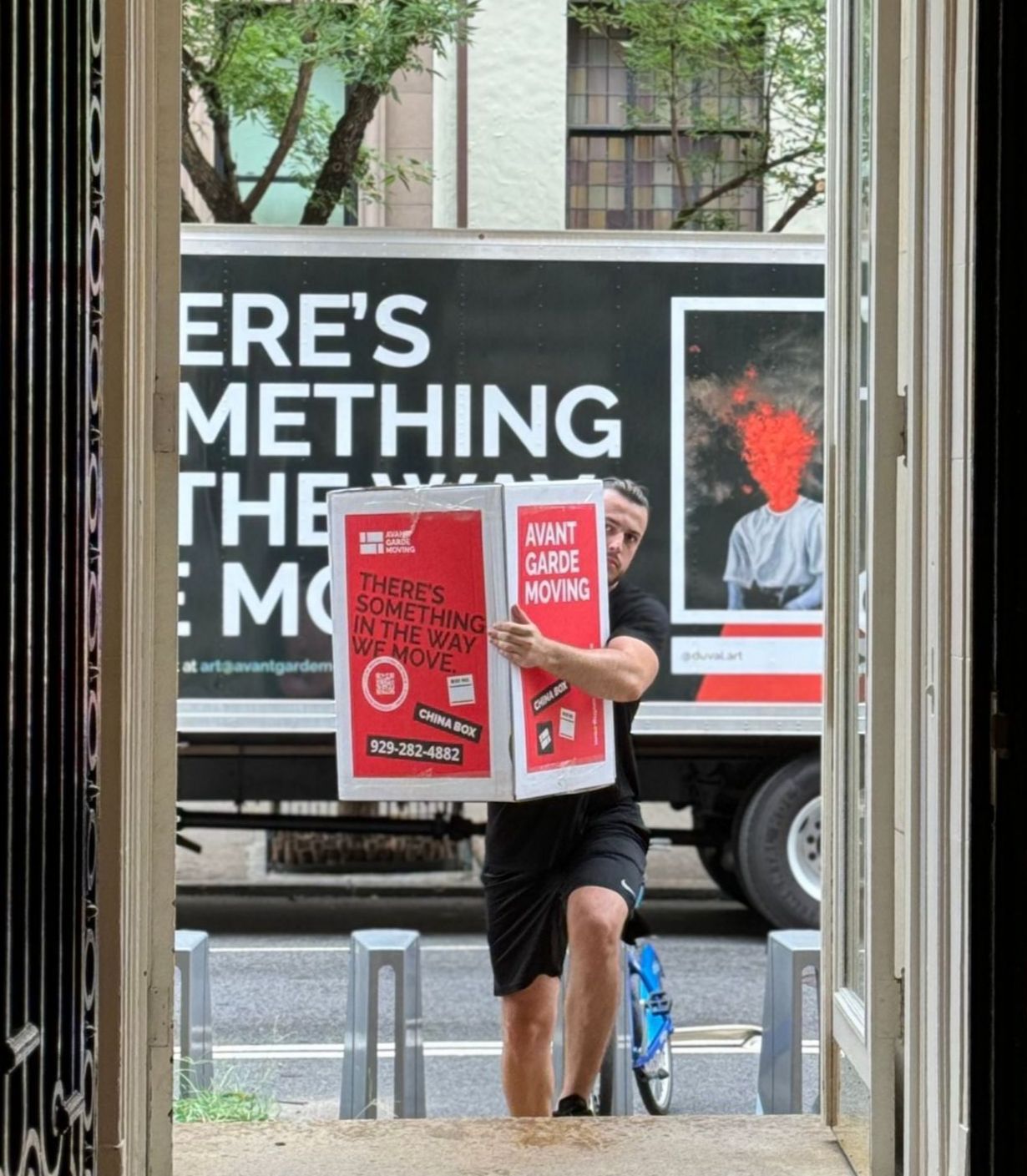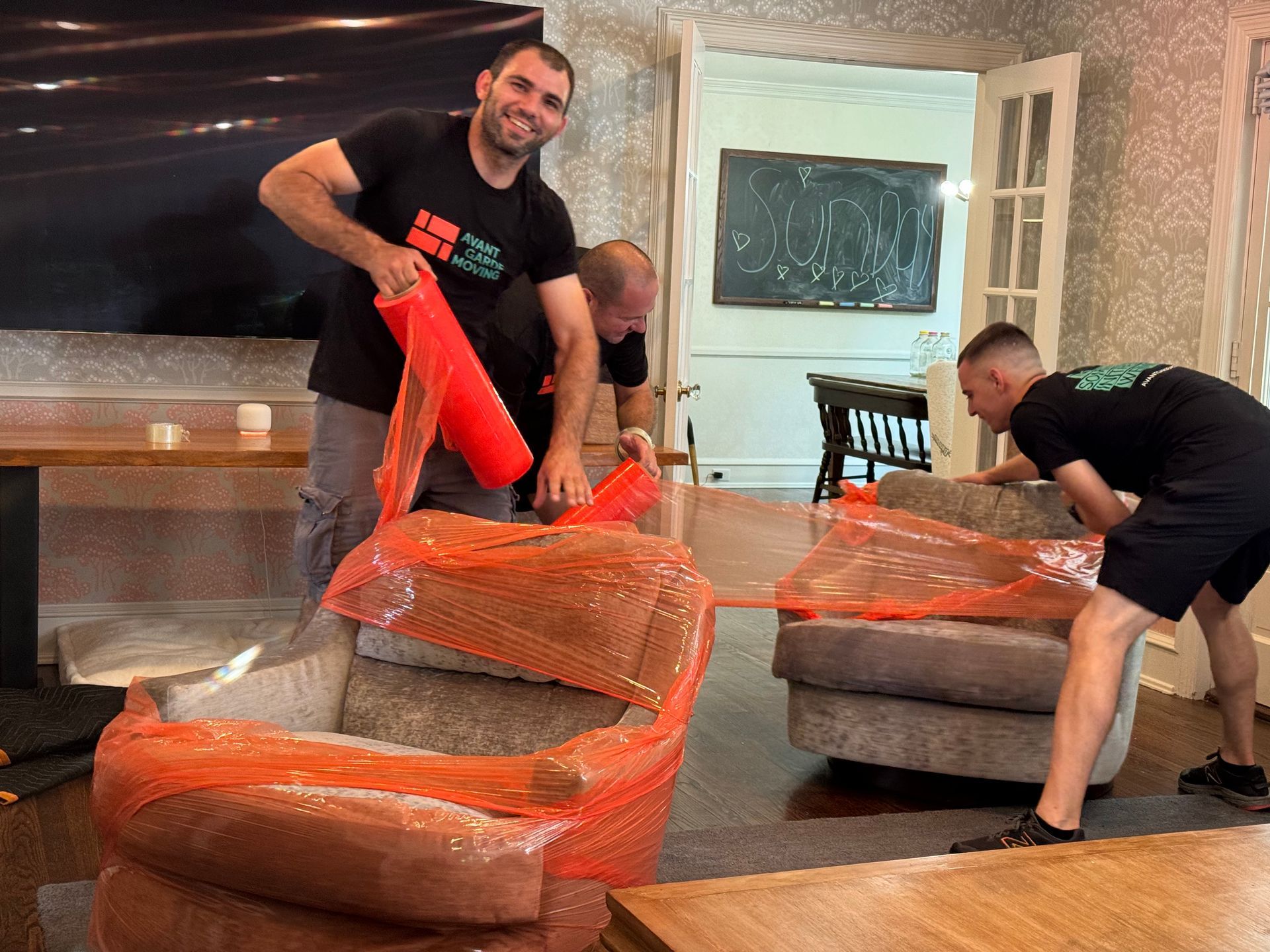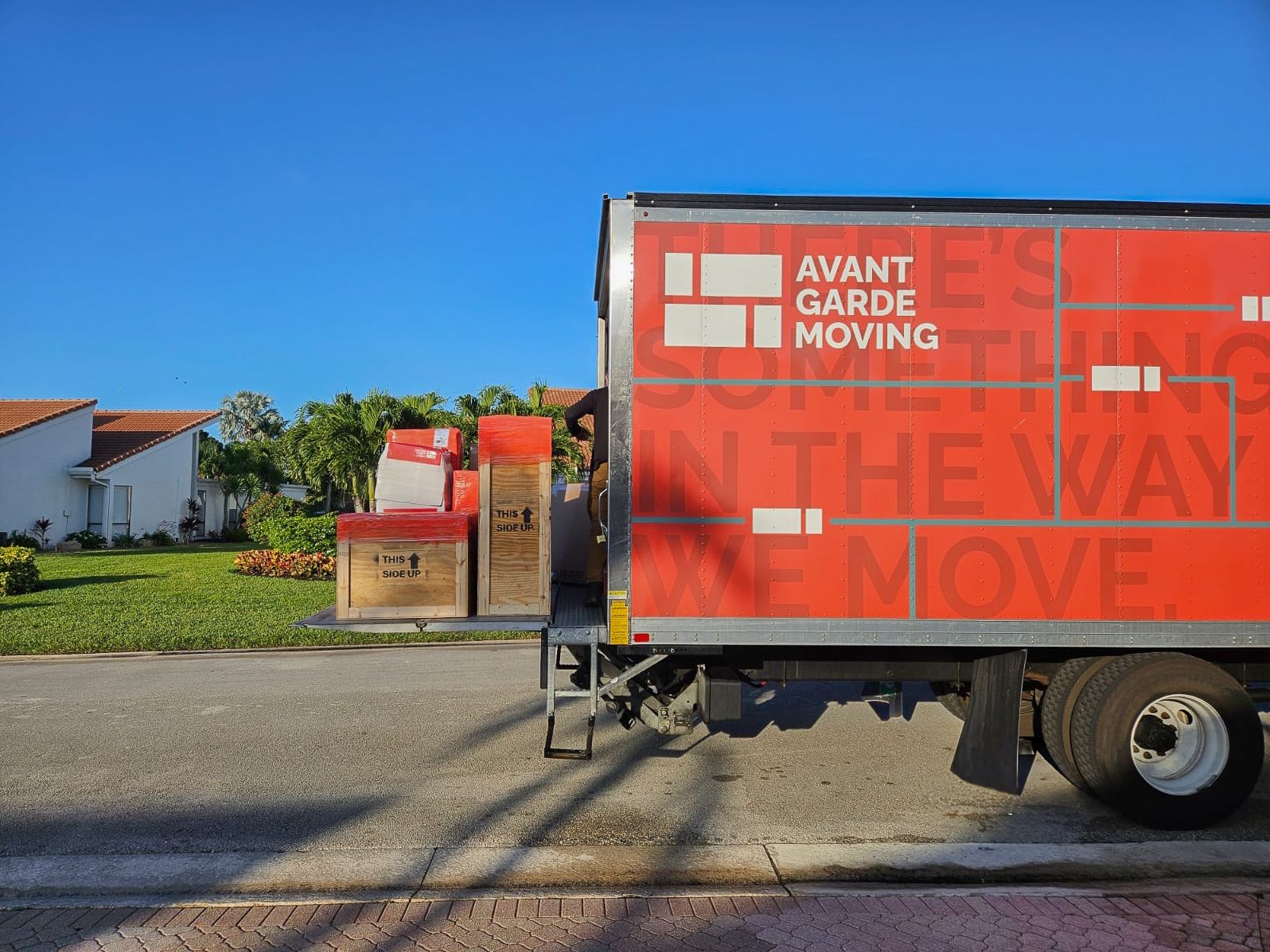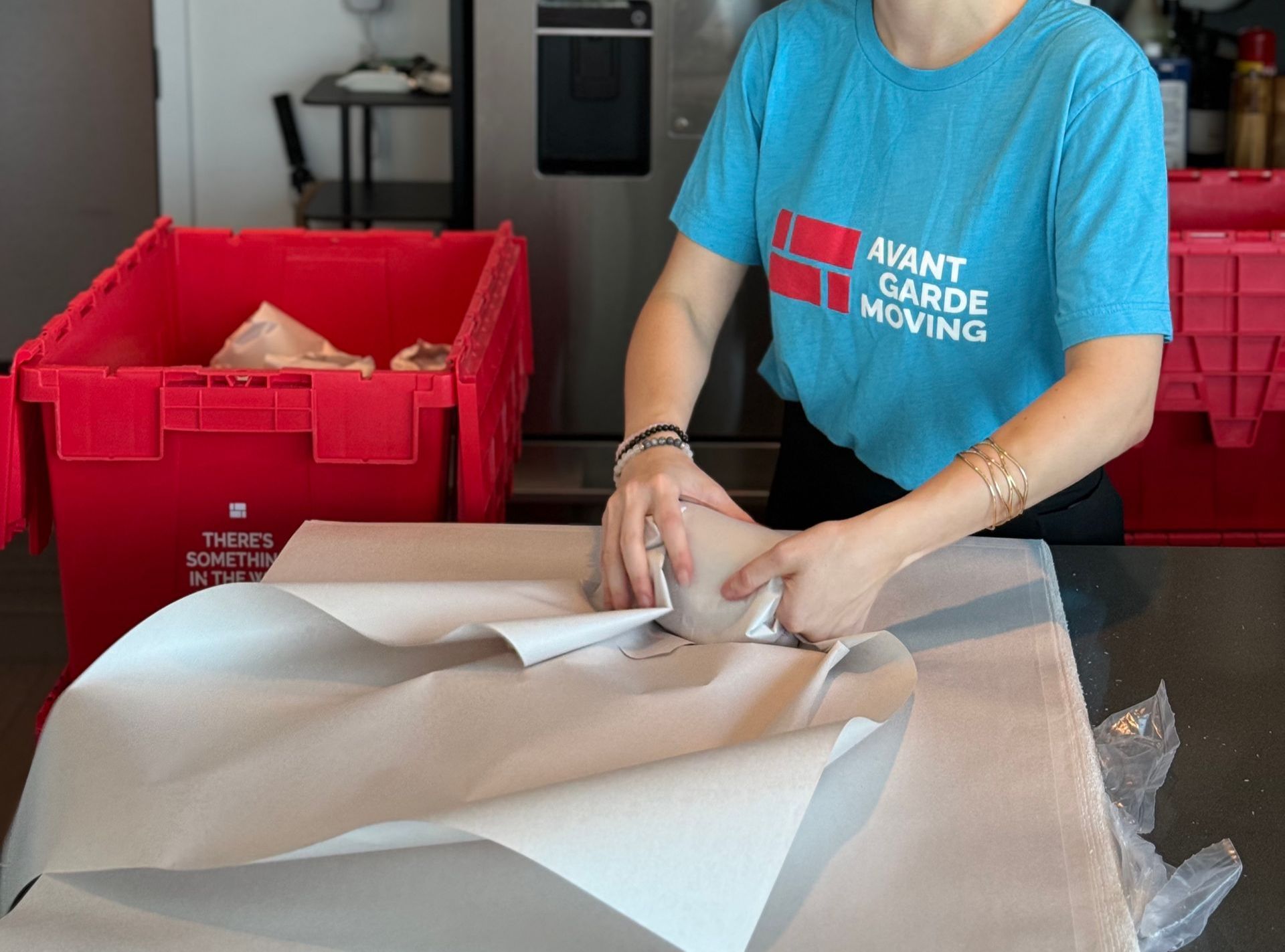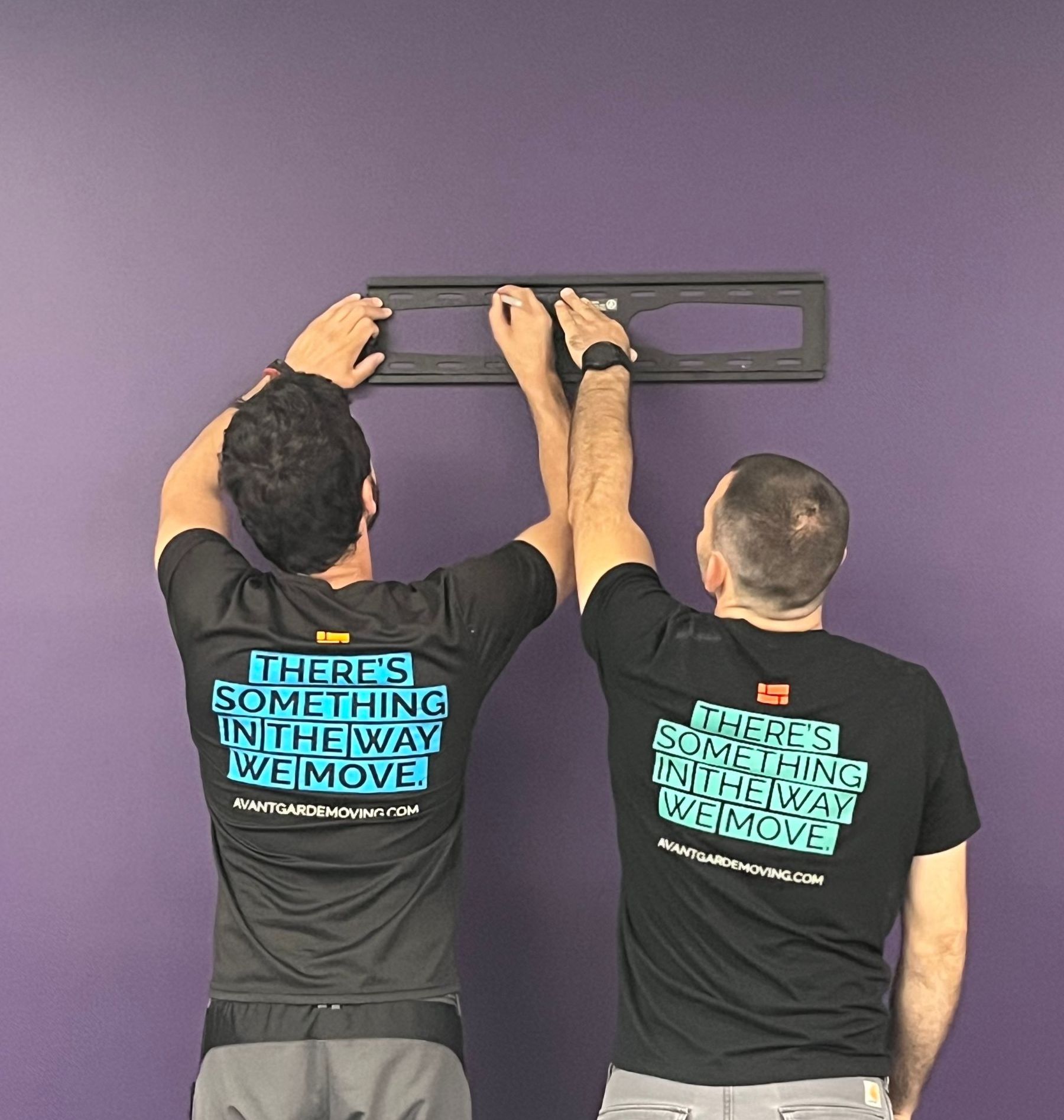How to Pack for a Move Without Stress or Damage
Avoid Damage, Leaks and Stress
Packing for a move can feel overwhelming, especially when you’re trying to ensure that nothing gets damaged or leaks during transit.
While hiring professional movers and packers like Avant-Garde Moving & Storage ensures a 99% success rate in avoiding such mishaps, we understand that many prefer to pack on their own.
We created a helpful guide on how to pack for a move. This will reduce risks and make things easier:
- Why Packing Properly Matters
- Essential Packing Material
- How to Pack a House for Moving
- Common Packing Mistakes to Avoid
- Additional Tips for a Smooth Move
- Final Thoughts
Take the time to review this before your moving day - your future self will thank you! Let’s dive in.
Our step-by-step guide ensures you pack smarter, not harder.
Why Packing Properly Matters
Improper preparation can lead to:
- Breakage: Fragile items may crack, shatter, or sustain damage.
- Leaks: Liquid items like oils or cleaning supplies can spill, damaging other belongings.
- Increased Stress: A disorganized approach can create frustration and delays on moving day.
By organizing thoughtfully and securing your belongings, you can avoid these issues and ensure a smoother transition. Let’s explore how to do it effectively.
Essential Packing Supplies Checklist
Before you start, gather the right supplies:
- Sturdy moving boxes (various sizes)
- Packing tape (strong and durable)
- Bubble wrap
- Packing paper or crumpled newspaper
- Foam peanuts
- Plastic wrap
- Labels and markers
- Resealable plastic bags
- Stretch wrap for furniture
Having the right tools ensures your belongings are packed securely and efficiently.
How to Pack a House for Moving?
1. Start Early and Declutter
Tip: Begin packing weeks in advance. Start with non-essential items like seasonal clothing, books, and decor.
- Declutter by donating or discarding items you no longer need.
- Fewer items to pack means less hassle and lower moving costs.
2. Do it Room by Room
Packing one room at a time helps you stay organized.
- Label Each Box: Clearly label boxes with the room they belong to and a brief description of contents (e.g., “Kitchen - Glassware”).
- Use a Packing Checklist: Ensure nothing is forgotten.
Check out our Kitchen Organization: Tips for Cabinets, Drawers, and Pantry for inspiration
3. How to Best Pack Fragile Items
Fragile items require extra care. Here’s how we pack them professionally:
- Use Small Boxes: For heavy or fragile items like plates and glasses, smaller boxes are safer to prevent overloading.
- Wrap Each Item: Use bubble wrap or packing paper for glassware, plates, and electronics.
- Fill Empty Spaces: Avoid movement by filling gaps with crumpled paper or foam peanuts.
- Stack Vertically: Plates should be packed vertically with padding between them to reduce pressure.
Example: Layer the bottom of the box with crumpled paper or bubble wrap before placing your items inside. For glasses, insert a small piece of crumpled paper into each cup for added stability. Tape the outside of the box with ‘Fragile’ labels for extra care during transport.
4. How to Prevent Leeks when Packing Liquids and Oils
Liquids are notorious for leaking. Follow these tips to prevent spills:
- Seal the Caps: Tape around the caps of oils, shampoos, and cleaning products.
- Wrap in Plastic: Place the item in a plastic bag before packing to contain any potential leaks.
- Pack Upright: Always place liquid containers upright in the box.
- Reinforce the Box: Use extra tape on the bottom of boxes containing liquids.
5. Best way to pack Clothes
For clothing, consider:
- Wardrobe Boxes: Ideal for hanging clothes to avoid wrinkles
- Vacuum-Sealed Bags: Save space by compressing items like jackets and bedding.
- Roll, Don’t Fold: Rolling clothes minimizes wrinkles and maximizes space.
6. Electronics and Cables
Electronics are delicate and expensive. Protect them by:
- Using Original Boxes: If available, original packaging provides the best fit.
- Labeling Cables: Use resealable plastic bags for cords and label them.
- Adding Padding: Wrap devices in bubble wrap and fill gaps with paper.
7. Heavy Items
Tip: Never overpack boxes with heavy items like books.
- Use Small Boxes: Prevent injuries and box damage by placing heavy items in smaller boxes.
- Reinforce the Box: Add extra tape to the bottom for added strength.
8. Furniture and Large Items
For bulky furniture:
- Disassemble: Remove legs, shelves, or other detachable parts.
- Wrap and Protect: Use stretch wrap and furniture pads to avoid scratches.
- Label Parts: Place screws and small components in resealable bags and label them.
Additional Packing Tips
- Fill in the Gaps
Loose items in boxes tend to move during transport, increasing the risk of breakage. Use materials like crumpled newspaper, bubble wrap, or even soft clothing to fill empty spaces and keep everything snug. This is especially important for fragile items like dishes and glassware. A snug box is a safe box!
- Don’t Overdo It
It’s tempting to stuff one box full to save space, but overloading boxes can make them hard to carry and more likely to break. Stick to manageable weights - if it’s too heavy for you to lift easily, it’s probably too heavy for the box as well. Spread out heavy items like books across several smaller boxes.
- Seal Like a Pro
Ensure every box is sealed securely with durable packing tape. Reinforce the bottom seams, especially if the box contains heavy items. For added security, use extra strips of tape in an “H” pattern across the top and bottom of the box.
- Prepare an Essentials Box
Set aside a box of must-have items for your first few days in your new home. Include toiletries, medications, important documents, chargers, basic kitchenware (like a coffee mug or a plate), and a few snacks. Think of it as your “survival kit” for the initial unpacking period.
- Think Outside the Box
Get creative with your packing! Use towels, blankets, or old t-shirts to wrap fragile items instead of buying extra bubble wrap. Not only does this save money, but it also cuts down on waste. Bonus: You’ll have fewer bulky linens to pack separately.
- Double-Check Liquids
Make sure all bottles with liquids - like shampoo, cleaning products, or olive oil - are sealed tight and placed in resealable plastic bags before going into a box. If anything leaks, the mess will be contained and won’t ruin other belongings.
- Label with Detail
Go beyond just writing “Kitchen” or “Bedroom” on your boxes. Add quick notes like “Plates - Fragile” or “Kids’ Winter Clothes.” You’ll thank yourself when it’s time to unpack and you can immediately find what you need without opening every box.
These practical tips can make all the difference when it comes to having a stress-free move. Taking the time to prepare properly now will save you headaches and potential damage later!
Common Mistakes to Avoid When Preparing for a Move
Taking shortcuts during preparation can lead to unnecessary complications. Here are some of the most frequent errors and how to avoid them:
1. Skipping Labels
Failing to label boxes properly can cause chaos when you’re trying to unpack. Always label each box with its intended room and a brief description of its contents. For example, instead of just writing "Kitchen," specify "Kitchen - Glassware."
For more insights on what not to do, read our guide on
DIY Moving Mistakes to Avoid to sidestep common pitfalls.
2. Using Weak or Damaged Boxes
Opting for flimsy boxes can result in collapsed containers and damaged belongings. Always choose sturdy, reinforced boxes, especially for heavier or fragile items. Double tape the bottom of the box for added security.
3. Packing Prohibited or Dangerous Items
Certain materials are restricted by moving companies due to safety concerns or regulations. The U.S. Department of Transportation (DOT) prohibits the transport of hazardous materials, including:
- Flammable items: Gasoline, lighter fluid, propane tanks, or matches.
- Explosives: Fireworks or ammunition.
- Corrosive substances: Bleach, drain cleaner, or car batteries.
- Perishables: Food items that could spoil or attract pests.
For these items, consider donating, properly disposing, or transporting them yourself in compliance with local laws.
4. Waiting Until the Last Minute
Leaving preparation for the last minute leads to rushed decisions, overlooked items, and poorly secured belongings. Start early to give yourself plenty of time to organize and protect your possessions properly. Want to stay ahead of schedule? Try these Easy Moving Tricks That Work.
5. Forgetting to Secure Fragile or Heavy Items
Failing to protect delicate items like glassware or overloading boxes with books can cause unnecessary damage or injuries during the move. Use cushioning materials like bubble wrap, paper, or foam peanuts to ensure items stay secure, and distribute weight evenly across boxes.
A customer once packed their glass bowls without padding, leading to shattered pieces upon arrival. Avoid this mistake by wrapping each bowl individually and ensuring no two surfaces touch.
By avoiding these common mistakes, you can make your move safer, more efficient, and far less stressful.
Why Professional Packing Makes a Difference 🙌
When Avant-Garde Moving & Storage handles your packing:
- Expert Techniques: We ensure fragile and valuable items are secure.
- Time-Saving: Our team packs efficiently, so you don’t have to.
- Insurance Coverage: Items packed by us are covered under our moving insurance.
Final Thoughts
Packing for a move is more than just filling boxes - it's about ensuring your belongings arrive intact and ready to use. That’s why we strongly encourage anyone planning to pack themselves to read and follow this guide carefully.
Proper preparation is key to preventing damage, leaks, or misplaced items. Remember, movers can only handle what they are given. If items are packed poorly, it can lead to issues beyond their control.
At Avant-Garde Moving & Storage, our goal is to make your move as seamless as possible. If packing feels overwhelming, or if you’d rather leave it to the experts, we’re here to help. Contact us today for a free quote and let us take the stress out of your moving experience.
If you're still deciding whether to hire professional packers or tackle the packing yourself, check out our detailed guide:
Should You Hire Professional Packers or Pack Yourself? for insights to help you make the right choice.
